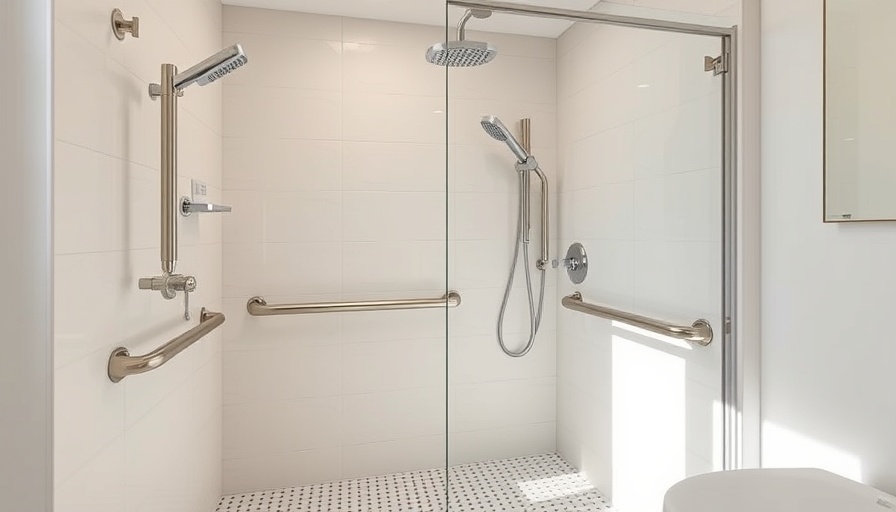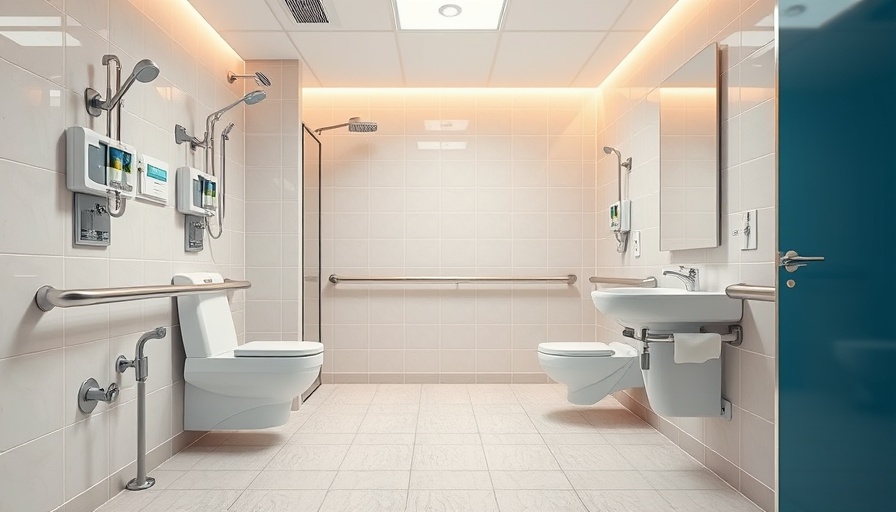
Creating Inclusivity: The Importance of Accessible Showers
Enhancing bathroom accessibility is about so much more than meeting legal requirements; it's about fostering independence, dignity, and safety for everyone who uses the space. As we strive for equity in all areas of life, ensuring that our homes accommodate the needs of everyone, especially older adults and those with disabilities, becomes paramount. Accessibility in shower design is a crucial aspect of this inclusivity.
Understanding Universal Design in Showers
At its core, universal design is about creating products and environments that are usable by all individuals, regardless of their age, ability, or status. In the context of showers, implementing these principles often means addressing potential barriers before users even encounter them. Features like wider entrances and zero-threshold entries can make a world of difference for people using walkers or wheelchairs, eliminating tripping hazards and promoting ease of access.
Key Features to Enhance Shower Accessibility
In terms of specific accessibility features, grab bars stand out as one of the most crucial installations. Positioned strategically within the shower, these bars provide vital support, guiding individuals as they enter and exit. Experts suggest that these should be placed at multiple heights to accommodate various users.
An adjustable handheld showerhead also offers immense flexibility for individuals who may not be able to stand for long periods. Not only does this feature cater to those with mobility challenges, but it also provides a better showering experience for all, as users can adjust the showerhead to their preferred angle and height.
Moreover, incorporating a built-in shower bench can improve safety and comfort by allowing users to sit while bathing. This simple addition can significantly boost confidence and independence during showering.
Ensuring Safety Through Material Choices
The choice of materials plays a pivotal role in shower design. Non-slip tiles are essential for reducing accidents such as slips and falls. Selecting textured surfaces enhances grip, providing an extra layer of security. Furthermore, it’s imperative to choose materials that are easy to clean and maintain, contributing to a hygienic bathing environment for everyone.
Incorporating contrasting colors in fixtures and flooring can also aid visually impaired individuals by offering visual cues that enhance spatial awareness. This attention to detail is beneficial not only for those who require extra support but for all users, creating a more intuitive environment.
Future Trends in Bathroom Accessibility
As the population ages, the demand for accessible bathrooms is expected to rise. Trends in home design are increasingly leaning towards inclusivity. Features once considered “specialty” are rapidly becoming standard in new home builds and renovations. Innovations such as smart home technology are also playing a role, with systems that allow individuals to adjust shower settings with mere voice commands enhancing independence further.
Such advances can transform the bathroom experience, providing not just accessibility, but a chance for individuals to reclaim their bathing routine and maintain dignity and privacy.
The Emotional Impact of Accessible Showers
Understanding the differences that accessible showers can make goes beyond facts and figures. For someone dependent on mobility aids, being able to shower safely can significantly impact their mental well-being. It's not just about physical access; it’s about fostering a sense of control over one’s life.
Reflecting on stories from individuals who have benefited from accessible bathroom renovations highlights the profound impact of these changes. Many have shared how such modifications contribute to their confidence and daily comfort, allowing them to enjoy moments of independence that many of us may take for granted.
Common Misconceptions About Shower Accessibility
Many homeowners may harbor misconceptions surrounding the cost and complexity of creating an accessible bathroom. They may believe that making these modifications necessarily means sacrificing aesthetics. This couldn't be further from the truth. Today’s accessible design combines functionality and style seamlessly, proving that beautiful and practical can coexist in the bathroom.
Moreover, investment in accessibility now can lead to substantial long-term savings by preventing injuries and hospitalizations due to slips and falls, particularly in aging populations.
Conclusion: Embrace Inclusivity in Bathroom Design
In conclusion, designing an accessible shower isn’t just about adherence to regulations; it is a commitment to dignity, independence, and safety for all users. Homeowners, designers, and builders alike should prioritize these features to create spaces that everyone can use comfortably.
Let’s embrace this shift toward inclusivity, making bathrooms spaces of comfort and confidence. Whether renovating your home or building a new one, consider the transformative power of thoughtful bathroom design. Together, we can create environments that welcome everyone.
 Add Row
Add Row  Add
Add 




Write A Comment